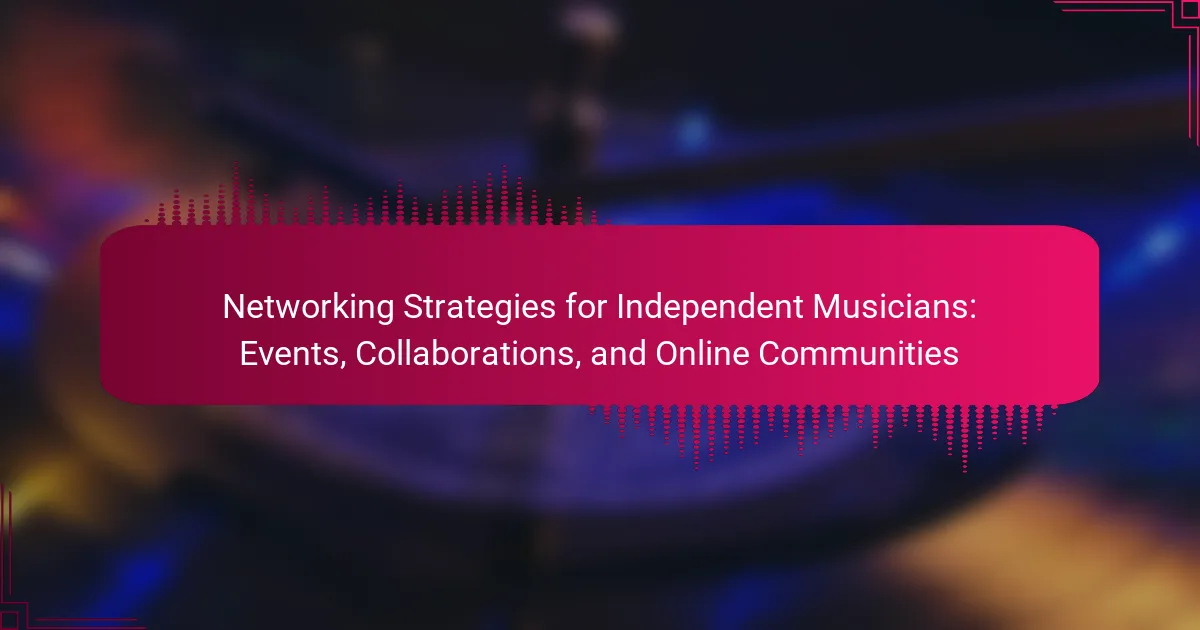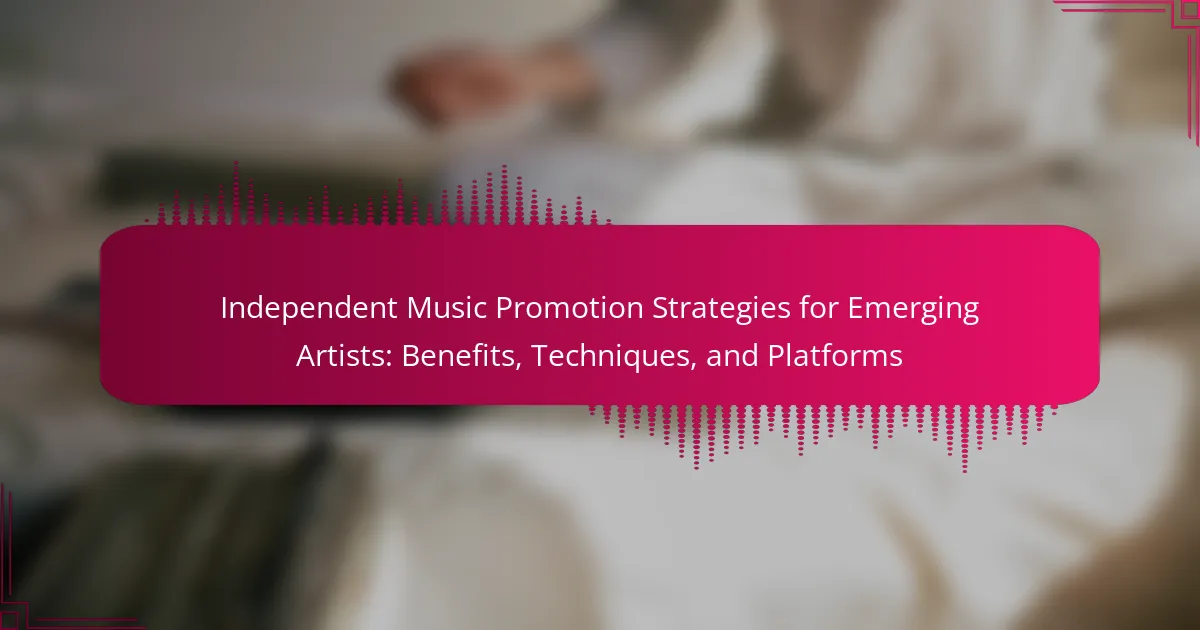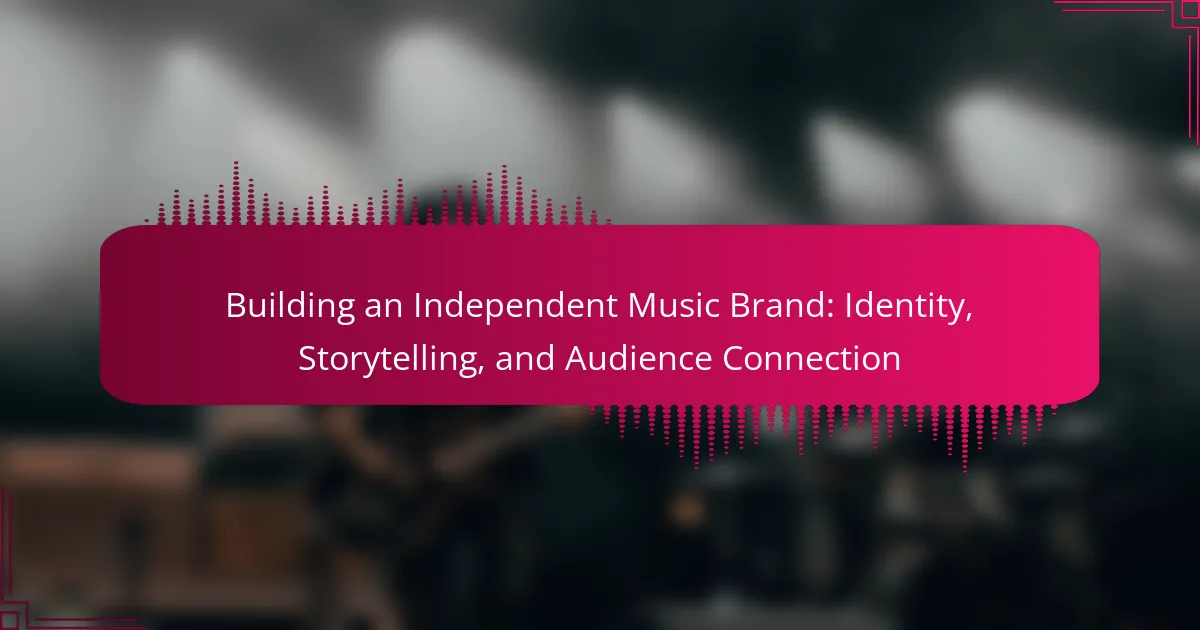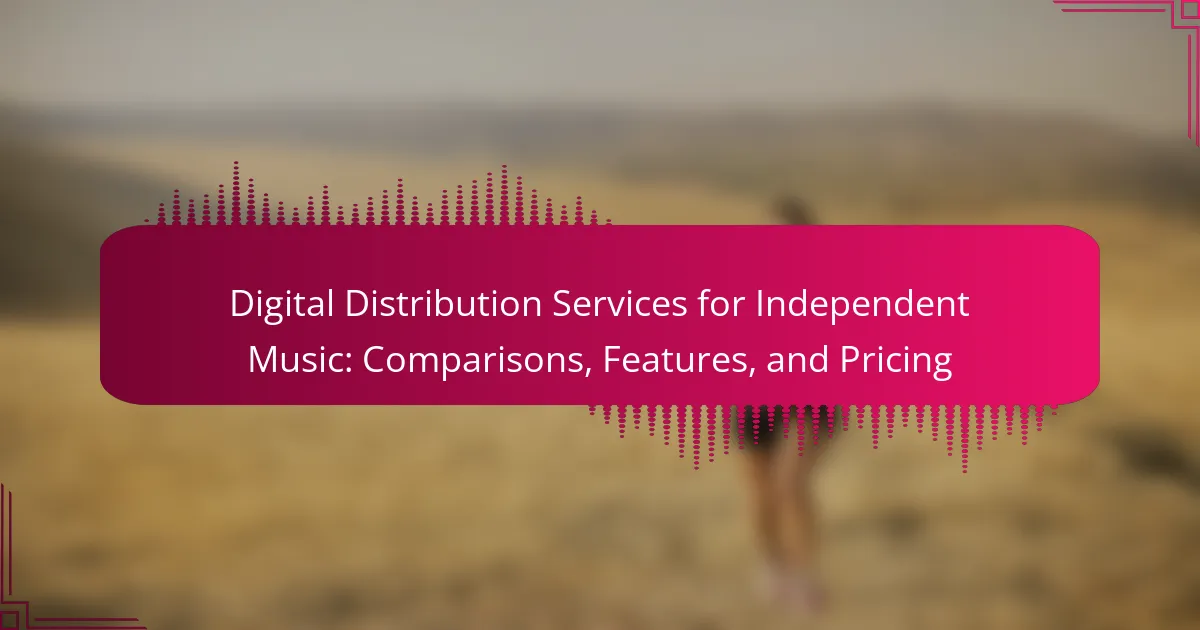Social media marketing is essential for independent artists seeking visibility and audience engagement. This article covers best practices, emerging trends, and effective engagement tips. Key platforms like Instagram, TikTok, and YouTube will be highlighted for their unique benefits. Additionally, we will explore metrics for measuring success and strategies to overcome common challenges.
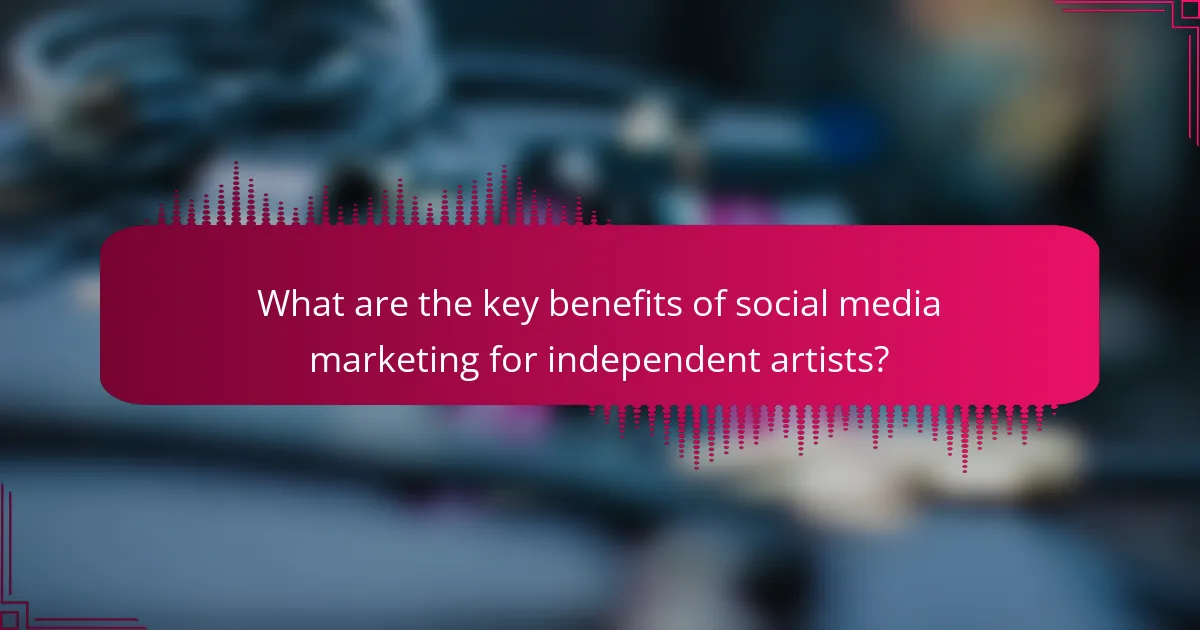
What are the key benefits of social media marketing for independent artists?
Social media marketing offers independent artists increased visibility, audience engagement, and cost-effective promotion. Artists can showcase their work, connect with fans, and leverage analytics for targeted strategies. This approach enables them to build a personal brand and foster community support. Additionally, platforms like Instagram and TikTok provide unique opportunities for viral marketing, enhancing reach and growth potential.
How does social media enhance visibility and reach?
Social media significantly enhances visibility and reach for independent artists by providing platforms for direct engagement with audiences. These platforms allow artists to showcase their work, build a following, and connect with fans globally.
Utilising targeted advertising on social media can increase exposure and attract new listeners. For instance, artists can leverage features like Instagram Stories and Facebook Live to create interactive experiences, leading to higher engagement rates.
The use of analytics tools on these platforms helps artists understand their audience demographics and preferences. This data-driven approach enables artists to tailor their content effectively, resulting in improved reach and retention.
Moreover, collaborating with influencers or other artists can amplify exposure. Such partnerships often lead to cross-promotion, expanding the artist’s visibility to new audiences.
Why is audience engagement crucial for independent artists?
Audience engagement is crucial for independent artists as it builds a loyal fan base and enhances visibility. Engaged audiences are more likely to share content, attend events, and support artists financially. Social media platforms provide a direct line to fans, allowing artists to communicate authentically and gather feedback. This interaction fosters a sense of community, which is vital for long-term success. Moreover, consistent engagement can lead to increased algorithmic favour on social media, making content more discoverable.

What platforms are most effective for independent artists in 2025?
Social media platforms like Instagram, TikTok, and YouTube will be most effective for independent artists in 2025. These platforms prioritise visual content, allowing artists to showcase their work dynamically. Instagram’s emphasis on high-quality images and stories promotes engagement. TikTok’s short-form video format enables viral trends and wider reach. YouTube supports longer content, fostering deeper connections with audiences. Utilising these platforms effectively can enhance visibility and fan interaction.
Which platforms are popular among independent artists in the UK and US?
Instagram, TikTok, and YouTube are popular platforms among independent artists in the UK and US. These platforms offer visual storytelling, short-form video content, and music sharing, enhancing audience engagement. Instagram’s visual focus allows artists to showcase their work, while TikTok’s algorithm promotes virality. YouTube serves as a hub for music videos and artist channels, providing monetisation opportunities.
How do platform features influence artist marketing strategies?
Platform features significantly shape artist marketing strategies by enhancing visibility and engagement. Features such as algorithm-driven content distribution, audience targeting capabilities, and interactive tools enable independent artists to connect effectively with their fan base. For instance, platforms that prioritise video content can drive higher engagement rates, allowing artists to showcase their creativity. Additionally, analytics tools provide insights into audience behaviour, helping artists refine their strategies. As a result, leveraging these features can lead to increased brand awareness and fan loyalty.
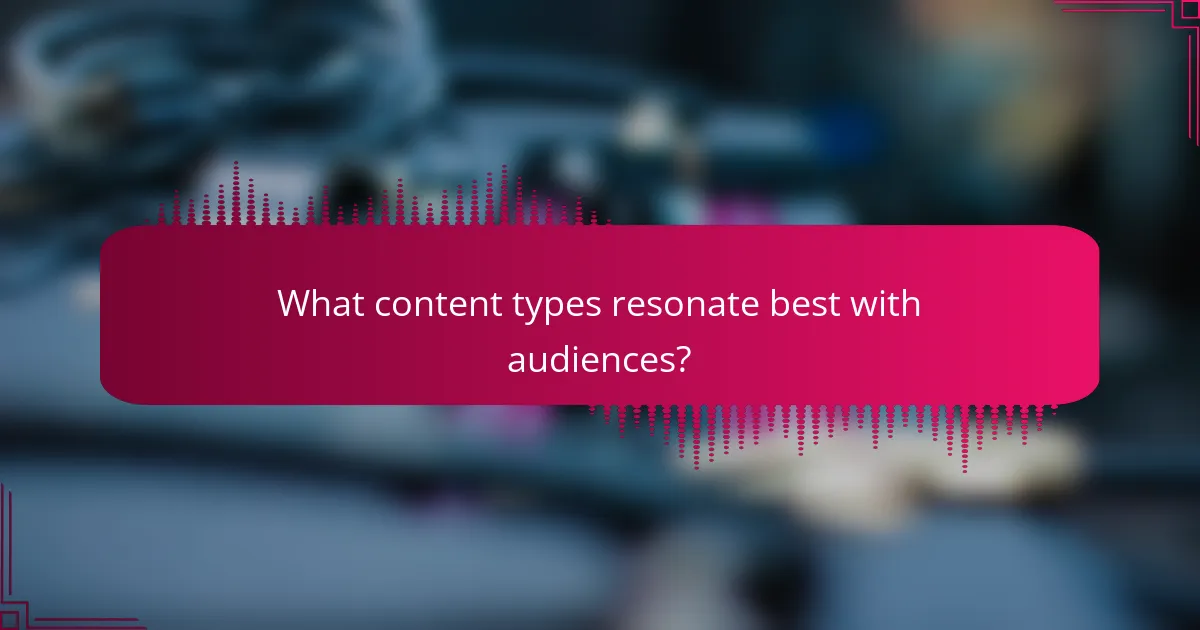
What content types resonate best with audiences?
Visual content types resonate best with audiences in social media marketing. Engaging images, videos, and infographics capture attention and encourage interaction. Short-form videos, like those on TikTok or Instagram Reels, drive significant engagement. User-generated content builds community and trust, while behind-the-scenes posts create authenticity. Regularly analysing audience preferences helps refine strategies for optimal engagement.
Which visual formats drive engagement on social media?
Visual formats that drive engagement on social media include images, videos, and infographics. These formats capture attention and encourage interaction, with videos generating the highest engagement rates. Research shows that posts with videos receive 48% more views than those without. Additionally, live videos foster real-time interaction, enhancing audience connection. Images are effective for storytelling, while infographics simplify complex information, making it shareable. Prioritising these formats can significantly boost engagement for independent artists in their social media marketing efforts.
How important is storytelling in an artist’s social media presence?
Storytelling is crucial for an artist’s social media presence as it fosters deeper connections with audiences. Engaging narratives can enhance emotional resonance, making content more relatable. Artists who effectively use storytelling can differentiate themselves in a crowded market, showcasing their unique attributes and creative journeys. This approach not only drives engagement but also builds a loyal following, essential for independent artists.
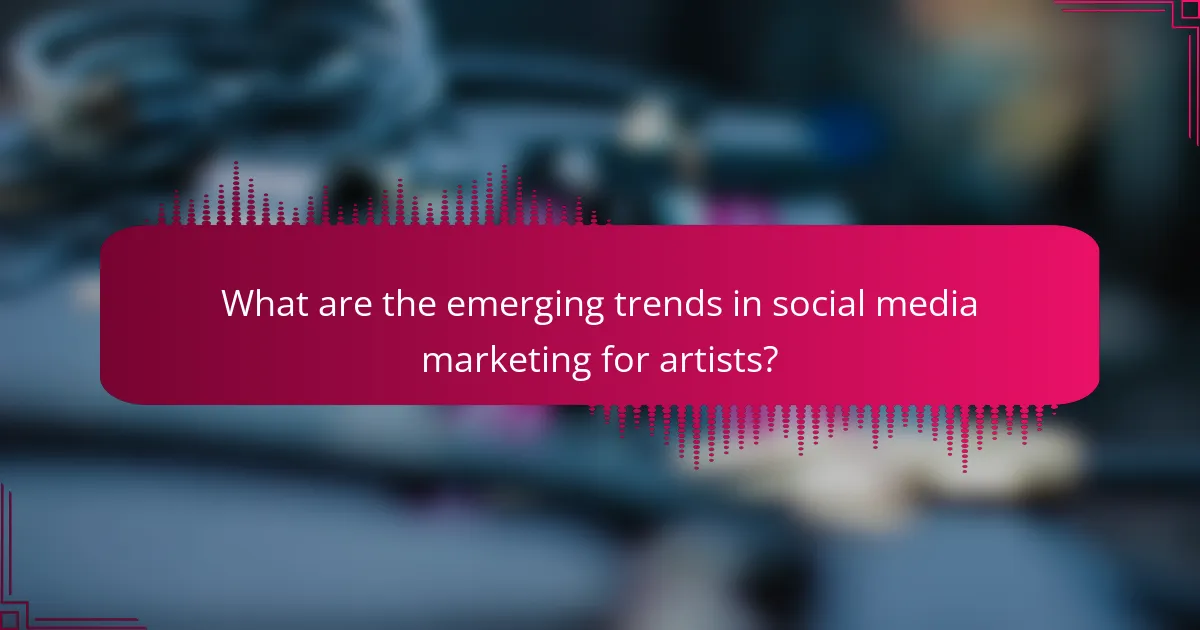
What are the emerging trends in social media marketing for artists?
Emerging trends in social media marketing for artists include a focus on authenticity, short-form video content, and community engagement. Artists are increasingly using platforms like TikTok and Instagram Reels to showcase their work and connect with audiences. Data shows that 85% of marketers believe video content is the most effective way to engage users. Additionally, collaborations with other creators help expand reach and enhance visibility. Finally, leveraging analytics tools to understand audience behaviour is becoming essential for targeted marketing strategies.
How is the use of video content evolving among independent artists?
The use of video content among independent artists is rapidly evolving as they leverage platforms for greater engagement. Artists increasingly utilise short-form videos on social media to showcase their work, connect with audiences, and promote their music. This trend is driven by the growing preference for visual content and the ability to reach wider audiences through viral sharing.
As a result, independent artists are adopting best practices such as storytelling through video, behind-the-scenes content, and interactive live sessions to enhance audience connection. Statistics indicate that video posts generate 48% more engagement than photo posts, highlighting the importance of this medium in social media marketing strategies.
Moreover, platforms like TikTok and Instagram Reels are becoming essential for music promotion, allowing artists to create catchy snippets of their songs that can resonate with viewers. This shift towards video content not only enhances visibility but also fosters a community around the artist’s brand.
Overall, the evolution of video content is reshaping how independent artists market themselves, emphasising creativity and authenticity in their engagement efforts.
What role do influencer collaborations play in artist promotion?
Influencer collaborations significantly enhance artist promotion by expanding reach and credibility. These partnerships enable independent artists to tap into established audiences, increasing visibility. Influencers often share content that resonates with their followers, leading to higher engagement rates. This strategy is especially effective as 49% of consumers depend on influencer recommendations for purchase decisions. Collaborating with influencers can also create authentic connections, fostering a loyal fan base. Ultimately, leveraging influencer marketing can result in increased streaming numbers, merchandise sales, and concert attendance for independent artists.
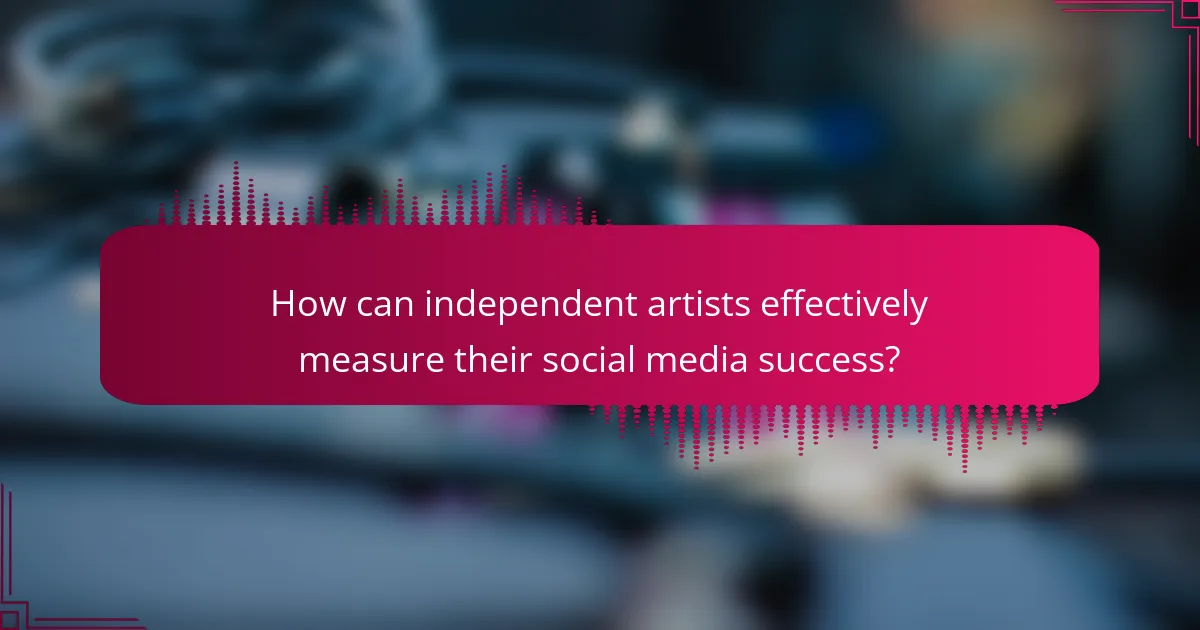
How can independent artists effectively measure their social media success?
Independent artists can measure their social media success by tracking engagement metrics, follower growth, and content reach. Focus on key performance indicators like likes, shares, comments, and click-through rates. Use analytics tools to gain insights into audience demographics and behaviour. Regularly assess these metrics to refine strategies and enhance audience engagement.
What metrics should artists track to evaluate engagement?
Independent artists should track metrics like engagement rate, reach, impressions, follower growth, and interactions. These metrics provide insights into audience connection and content effectiveness.
| Metric | Description |
|———————-|—————————————————|
| Engagement Rate | Percentage of interactions per post |
| Reach | Total unique users who see the content |
| Impressions | Total views of the content |
| Follower Growth | Increase in followers over a specific period |
| Interactions | Total likes, comments, and shares combined |
How can analytics tools assist in refining marketing strategies?
Analytics tools enhance marketing strategies for independent artists by providing data-driven insights. They allow artists to track engagement metrics, audience demographics, and content performance. This information helps refine targeting and improve content relevance. For example, tools can identify which posts generate the most interaction, guiding future content creation. Additionally, analytics can reveal trends in audience behaviour, enabling artists to adapt their strategies proactively. By leveraging these insights, independent artists can optimise their social media presence and foster deeper connections with their audience.
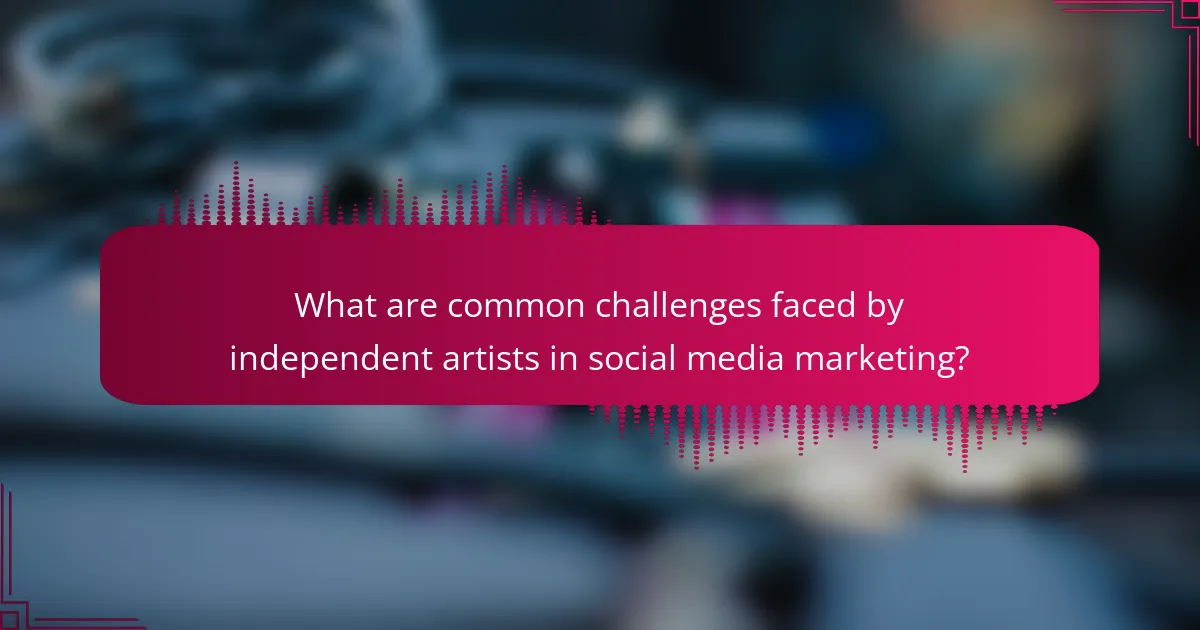
What are common challenges faced by independent artists in social media marketing?
Independent artists face several challenges in social media marketing. Limited budgets restrict advertising options. Inconsistent engagement makes it hard to build a loyal following. Content creation demands time and creativity, often leading to burnout. Algorithm changes can diminish organic reach, complicating visibility. Lastly, navigating multiple platforms requires diverse strategies, which can overwhelm artists.
How can artists overcome algorithm changes on social media platforms?
Artists can overcome algorithm changes on social media by diversifying their content strategies and engaging directly with their audience. Focus on creating high-quality, authentic content that resonates with followers. Utilise platforms that prioritise organic reach, such as TikTok or Instagram Stories, to maintain visibility. Cultivate a community by encouraging interaction through comments, polls, and live sessions. Consistently analyse engagement metrics to adapt to shifts in algorithms and audience preferences. Establishing a strong brand identity helps retain followers amid changes.
What strategies can help manage negative feedback or criticism?
To manage negative feedback or criticism effectively, independent artists should adopt proactive strategies. First, respond promptly and professionally to demonstrate engagement. Second, view criticism as constructive feedback for improvement. Third, engage with supporters to counterbalance negativity. Fourth, maintain a positive online presence that reflects your brand. Lastly, consider feedback trends to identify recurring issues and adapt accordingly.

What best practices should independent artists follow for effective social media marketing?
Independent artists should focus on authentic engagement, consistent posting, and leveraging analytics for effective social media marketing. Building a genuine connection with followers fosters loyalty and increases visibility. Regularly sharing content, including behind-the-scenes glimpses and personal stories, keeps the audience engaged. Utilising analytics helps artists understand audience preferences and optimise content strategy. Collaborating with other artists or influencers can also expand reach and introduce new audiences.
How can artists create a consistent brand identity online?
Artists can create a consistent brand identity online by defining their unique style, using cohesive visuals, and engaging with their audience authentically. Establishing a recognisable aesthetic across platforms helps in building trust. Consistency in posting frequency and messaging reinforces brand identity. Engaging storytelling about their journey or inspirations can deepen audience connection. Utilising analytics to understand audience preferences allows artists to tailor content effectively.
What are the dos and don’ts of engaging with followers?
Engaging with followers requires authenticity and responsiveness. Do share personal stories and insights to build connections. Don’t ignore comments or messages, as engagement fosters community. Do use visuals and multimedia to enhance interaction. Don’t over-promote; focus on value and conversation.
How can artists leverage user-generated content for promotion?
Artists can effectively leverage user-generated content (UGC) to enhance their promotional efforts by engaging their audience creatively. UGC fosters community and authenticity, encouraging fans to share their experiences with the artist’s work.
To maximise this, artists can initiate challenges or contests that invite fans to create content related to their music or art. This approach not only generates a wealth of promotional material but also strengthens the emotional connection between the artist and their audience.
Additionally, featuring UGC on official social media channels serves to acknowledge fans, boosting loyalty and encouraging further engagement. Highlighting unique fan interpretations or rare artistic expressions can differentiate an artist’s brand, creating a vibrant community around their work.
Incorporating UGC into marketing strategies can lead to increased visibility, as content shared by fans often reaches wider audiences through social sharing.
What common mistakes should independent artists avoid in their social media strategies?
Independent artists should avoid inconsistent branding, neglecting audience engagement, overposting, and failing to analyse performance metrics. These mistakes can undermine their social media effectiveness. Consistent branding ensures recognition, while audience engagement fosters community. Overposting can lead to audience fatigue, and analysing metrics helps refine strategies.
